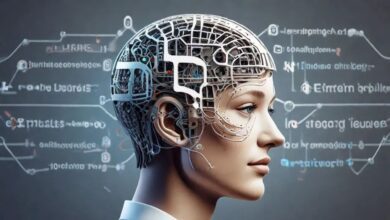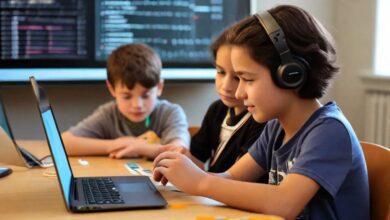AI for All: How AI Can Support Students with Disabilities

AI for All: How AI Can Support Students with Disabilities
Artificial intelligence (AI) has the potential to revolutionize the way we learn, work, and live. However, there is a growing concern that AI may exacerbate existing inequalities, particularly for students with disabilities. In this article, we will explore how AI can be designed to support students with disabilities, promoting inclusivity and accessibility in education.

The Challenges Faced by Students with Disabilities
Students with disabilities face unique challenges in the classroom, from navigating physical barriers to keeping up with complex academic materials. For example, students with visual impairments may struggle to access digital materials, while those with hearing impairments may have difficulty understanding spoken instructions. Students with mobility impairments may require accommodations such as note-taking assistance or wheelchair accessibility. Students with learning disabilities, such as dyslexia or ADHD, may need adaptive technologies to help them process and retain information.
How AI Can Support Students with Disabilities
AI has the potential to mitigate these challenges by providing personalized support and accommodations to students with disabilities. Here are some ways AI can make a positive impact:
-
- Adaptive Learning Systems: AI-powered adaptive learning systems can adjust the difficulty level of course materials based on a student’s learning style, pace, and abilities. This can help students with learning disabilities or physical impairments stay engaged and motivated.
-
- Accessibility Features: AI-powered tools can provide accessibility features such as text-to-speech functionality, speech-to-text functionality, and high contrast modes to help students with visual or hearing impairments.
-
- Personalized Tutoring: AI-powered tutoring systems can provide one-on-one support to students with learning disabilities or other challenges, helping them to better understand complex concepts and retain information.
-
- Natural Language Processing: AI-powered natural language processing (NLP) can help students with language-based learning disabilities, such as dyslexia, to better understand and process written and spoken language.
-
- Virtual Assistants: AI-powered virtual assistants can provide students with disabilities with personalized support and accommodations, such as scheduling appointments, sending reminders, and providing notes and summaries.

Real-World Examples
Several organizations are already using AI to support students with disabilities:
-
- Microsoft’s AI-powered accessibility tools: Microsoft has developed AI-powered accessibility tools, such as Microsoft Azure Cognitive Services, to help students with disabilities navigate digital materials.
-
- Duolingo’s AI-powered language learning platform: Duolingo’s AI-powered language learning platform provides personalized support to students with language-based learning disabilities, such as dyslexia.
-
- IBM’s AI-powered adaptive learning system: IBM’s AI-powered adaptive learning system, Watson, provides personalized support to students with learning disabilities, such as dyslexia and ADHD.
Conclusion
AI has the potential to revolutionize education, particularly for students with disabilities. By providing personalized support and accommodations, AI can help level the playing field and promote inclusivity and accessibility in education. As AI continues to evolve, it is essential that we prioritize designing AI systems that are accessible and usable for all students, regardless of their abilities. By working together, we can create a more inclusive and supportive learning environment for all students.





